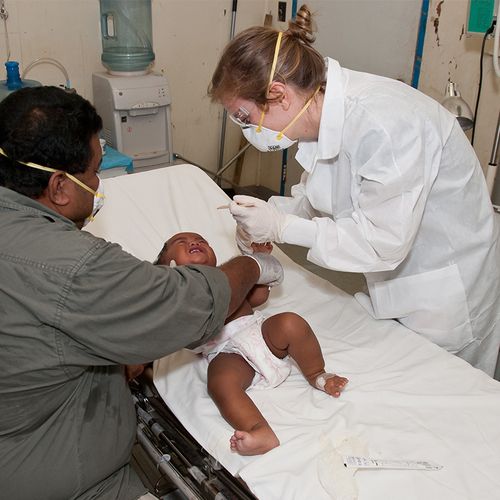Overcrowding in emergency rooms appears to keep children with broken arms and legs from getting pain relief in a timely manner, according to a recent study.
Researchers from the University of Colorado School of Medicine said their findings are significant since these injuries, known as long bone fractures, are common among children and very painful.
"Pain associated with long bone fractures can be pretty severe," said study author Marion Sills, MD, associate professor of pediatrics at the University of Colorado School of Medicine. "But crowded emergency departments are impacting the delivery of care on many levels, including the delivery of pain medication."
Study Details
In conducting the study, published in the journal Academic Emergency Medicine, researchers examined 1,229 children treated in an ER over the course of one year. They found the children were 4% to 47% less likely to receive treatment in a timely fashion when the ER was very crowded (at the 90th percentile) than when it was less crowded (at the 10th percentile). The researchers also found the children were 3% to 17% less likely to receive effective care in these crowded conditions.
"The relationship between emergency department crowding and pain treatment is not unexpected," noted Dr. Sills. "When the emergency department gets busier, staff may be less responsive to the needs of individual patients and, as a result, patients have a higher likelihood of non-treatment and delays in treatment."
Possible Solutions
The authors said delays happen in some cases when only doctors are permitted to provide certain pain medications to patients.
"The expensive way to mitigate crowding is to hire more staff. Another way is to leverage the staff you have," Dr. Sills said. "Institutions can use techniques like protocols for pain management with standing orders for nurses, and computer- or phone-based alerts to call attention to under-treated pain."
Crowding is a serious issue, said Dr. Sills. "It is caused by a variety of things, from patients who too readily use emergency departments to federal policies that exacerbate the problem," she noted. "We as a nation need to get serious about this. Crowding needs to be a policy priority at every level."
Children and Radiation
Did you know the average American child is exposed to medical radiation more than seven times by age 18? X-rays and other medical tests that use radiation increase risk for cancer. Of particular concern are CT scans, which use more radiation than X-rays.
Sleeping Alongside Pets Can Make You Sick
A recent review of medical journals found that pets can carry pathogens for such bacterial infections as pasteurellosis and cat-scratch disease. The risk is rare, but it's still wise not to have your pet in bed with you. The pet can sleep next to the bed, not on it.
Keep Your Medications Out of Reach of Pets
Many medicines that are safe for people are not safe for pets. Examples...
- Nonsteroidal anti-inflammatory drugs (NSAIDs), such as Advil and Aleve, can cause kidney failure and serious ulcers in dogs, cats, birds and other pets.
- Acetaminophen, such as Tylenol, can severely damage cats' red blood cells and may cause liver failure in dogs.
- Antidepressants are sometimes used in pets in small doses, but human-strength pills can cause tremors, seizures, elevated heart rate and other dangerous conditions.
- ADD/ADHD medicines can cause life-threatening tremors, seizures and heart problems.
- Medical marijuana can affect a dog's heart and cause a coma-like stupor, loss of bladder control and more
Other human medicines that are dangerous to pets: Sleep aids, birth-control pills, heart medicines, thyroid hormones and more. Ask your veterinarian for details. If you think your pet has swallowed any human medicine, immediately call your vet or the Pet Poison Helpline, 800-213-6680.
